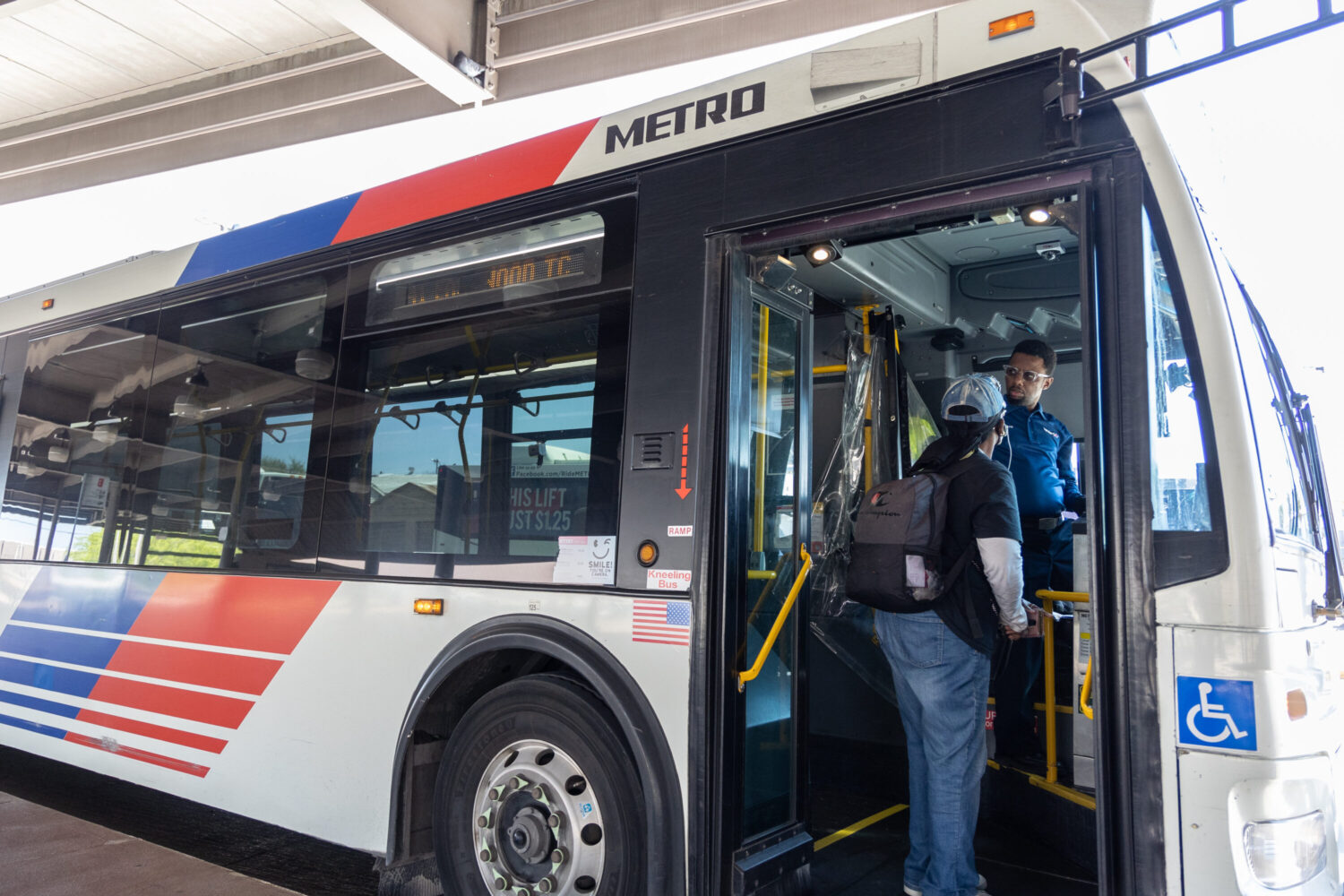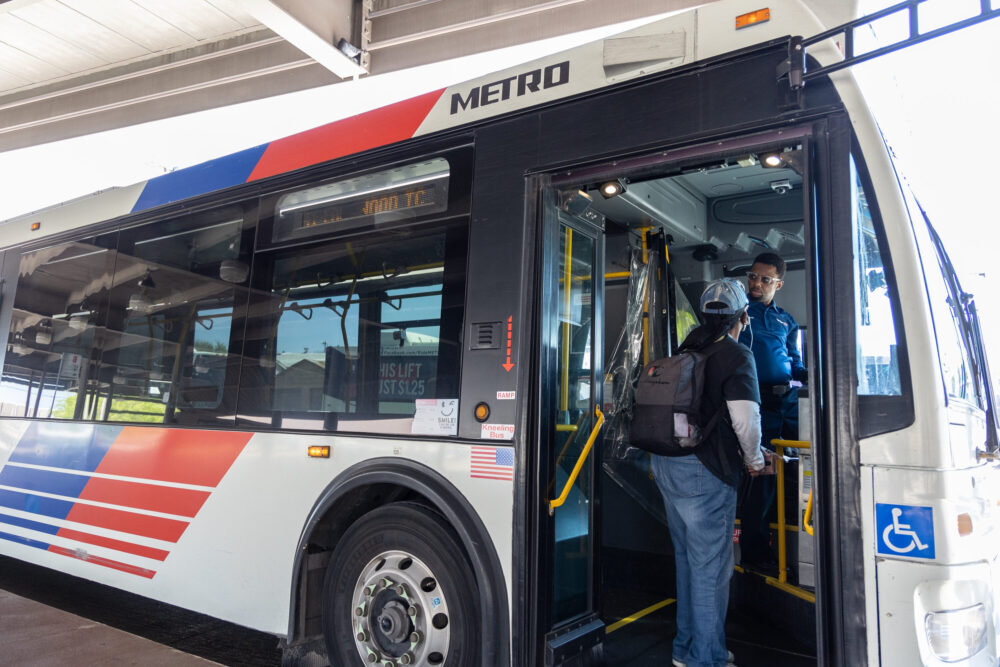Lucio Vasquez / Houston Public Media
A Houston-area resident boards a METRO bus on March 31, 2022.
The Metropolitan Transit Authority of Harris County (METRO) is expected to approve a $2 billion budget for fiscal year 2026, an increase of 5.8% from this year.
Much like in 2025, the operating budget emphasizes improvements in existing services under a new flagship initiative, METRONow, unveiled in February of this year.
The spending plan drew criticism from several commenters at a public hearing last week who expressed frustration that the proposed 2026 budget does not sufficiently address the priorities promised in a 2019 bond measure overwhelmingly approved by voters. The $3.5 billion bond initiative called for new bus rapid transit and expanded light rail under the now-defunct METRONext initiative.
Among those to voice their displeasure with the new spending priorities was Peter Eccles, the director of policy and planning with transit advocacy group LINK Houston.
“People who took time to make their voice heard at the public hearing were clear: We voted for METRONext, and we expect to see it built,” he said. “METRO should be clear with its voters and customers about where the projects in the METRONext plan stand, and how they plan to achieve the METRONext vision of a faster, more reliable and better connected transit system.”
Six years after its passage, METRO’s chief financial officer, George Fontinos, said, “METRO has not issued a penny” of the voter-approved bond. He also noted “the larger projects identified in this list of referendum projects were expected to be highly leveraged by federal grants. Considering the current climate in DC, focusing on these larger projects would not be financially prudent, nor would it realize any revenue service before the early to mid [20]30s.”
The shift in priorities also has coincided with a new group of leaders at METRO, many of whom were put in place by Houston Mayor John Whitmire. His administration has focused more on automobile-centric mobility in contrast to his predecessor, the late Sylvester Turner, who led a citywide expansion of cyclist- and pedestrian-friendly infrastructure.
METRO is now focusing its spending largely on improving existing services rather than ambitious service expansions.
“FY26 will continue the realization of METRONow, serving with a back-to-basics approach to give our riders clean, safe, reliable, accessible transit and mobility service,” Fontinos said during last week’s hearing.
RELATED: The rainbow crosswalks in Houston have been removed. Federal guidelines could inhibit their return
The budget priorities in 2026 include significant spending on street repaving, expanding microtransit and increasing METRO police capacity.
This simplified approach could be considered successful. METRO reports that its bus and light rail monthly ridership have hit new post-pandemic highs this year. METRO also built 15 miles of new sidewalks and multiple new pedestrian crossings on busy streets, along with making more than two-thirds of its bus stops universally accessible in 2025.
Other noteworthy line items in the proposed budget include $21 million for expanded service during the 2026 FIFA World Cup, when Houston will host seven matches; $27 million for a METRO police facility; and $180 million for new fleet vehicles, including 160 buses, 200 vans, and 140 METROLift paratransit vehicles.
The final budget vote is scheduled for the Sept. 25 METRO board meeting.

